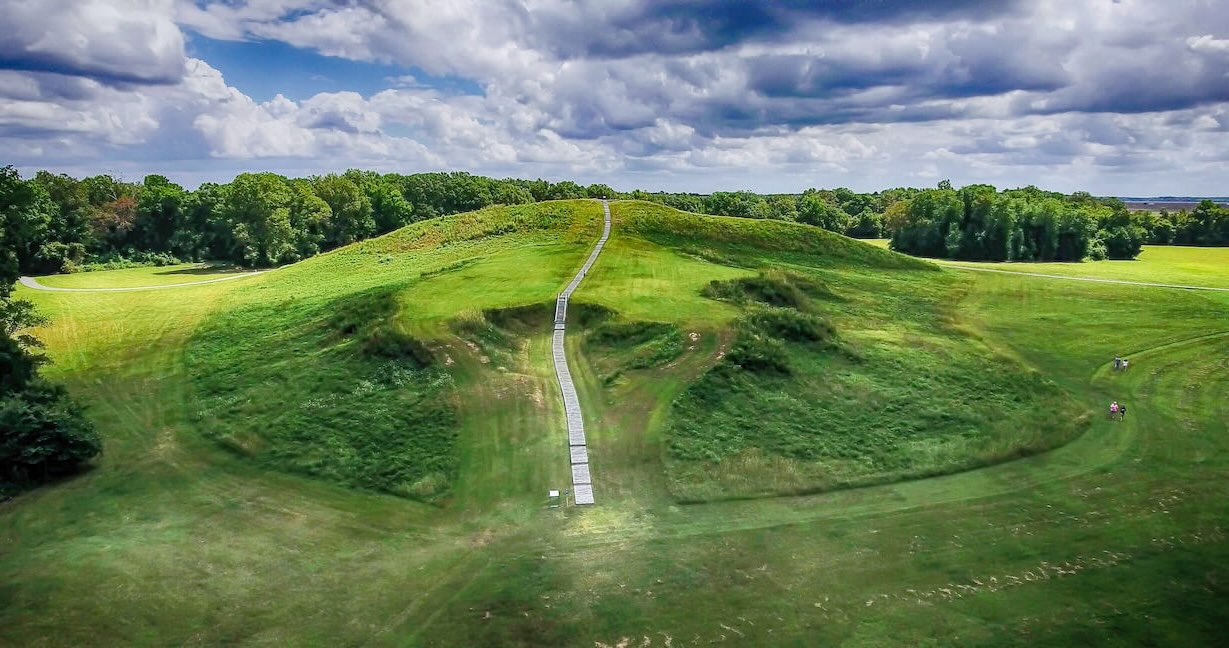Secrets Of Louisiana’s Poverty Point Mounds

Ever wondered about the ancient wonders hidden in Louisiana? Poverty Point Mounds is a fascinating site that offers a glimpse into a civilization that thrived over 3,000 years ago. Located in northeastern Louisiana, this UNESCO World Heritage Site features massive earthworks and mounds built by Native Americans. These structures were used for various purposes, including ceremonies, trade, and daily life. Visiting Poverty Point Mounds is like stepping back in time, providing a unique opportunity to learn about the ingenuity and culture of its builders. Whether you're a history buff or just curious, this site promises an unforgettable experience.
Secrets of Louisiana's Poverty Point Mounds
Louisiana's Poverty Point Mounds are a marvel of ancient engineering and culture. Built by Native Americans over 3,000 years ago, these earthworks offer a glimpse into a sophisticated society. Let's uncover the secrets of this UNESCO World Heritage Site.
The Enigmatic Earthworks
The Poverty Point Mounds are a series of earthen structures that have puzzled archaeologists for years. Each mound holds its own story and significance.
Mound A: The largest mound at Poverty Point, Mound A, stands 72 feet tall. Built in less than 90 days, it showcases the incredible labor and organization of its builders.
Mound B: Smaller but equally fascinating, Mound B is believed to have been used for ceremonial purposes. Its flat top suggests it may have hosted gatherings or rituals.
Mound C: This mound is unique due to its circular shape. Archaeologists think it might have been used for astronomical observations, aligning with celestial events.
The Mysterious Plaza
The central plaza at Poverty Point is another intriguing feature. This vast open space likely served as a communal area for various activities.
The Bird Effigy: One of the most striking features in the plaza is the bird effigy mound. Shaped like a bird in flight, it spans 70 acres and is best viewed from above.
The Concentric Ridges: Surrounding the plaza are six concentric ridges. These ridges may have been residential areas, with homes and other structures built on them.
Artifacts and Trade
Poverty Point was a hub of trade and craftsmanship. Artifacts found here reveal a network that spanned thousands of miles.
Stone Tools: Despite lacking local stone resources, the inhabitants crafted tools from materials traded from distant regions, including the Ouachita Mountains and the Ohio River Valley.
Clay Cooking Balls: These unique artifacts were used in cooking. Heated and placed in earth ovens, they helped cook food evenly.
Jewelry and Ornaments: Beads, pendants, and other ornaments made from materials like copper and soapstone indicate a society that valued personal adornment and had access to distant trade networks.
The People of Poverty Point
Understanding the people who built and lived at Poverty Point adds depth to its story. Their daily lives, beliefs, and social structures are reflected in the site.
Hunter-Gatherers: Unlike many other ancient societies, the people of Poverty Point were primarily hunter-gatherers. They relied on the rich natural resources of the Mississippi Delta.
Social Organization: The construction of the mounds and the organization of the site suggest a complex social structure with leaders who could mobilize large groups for communal projects.
Spiritual Beliefs: The alignment of mounds and artifacts suggests a deep spiritual connection to the land and the cosmos. Ceremonial practices likely played a significant role in their culture.
Preservation and Legacy
Poverty Point's preservation allows us to continue learning from this ancient site. Efforts to protect and study it ensure its secrets are not lost to time.
UNESCO World Heritage Site: Designated in 2014, this status helps protect Poverty Point and promotes its significance on a global scale.
Ongoing Research: Archaeologists continue to study the site, uncovering new insights into the lives of its ancient inhabitants. Each discovery adds to our understanding of this remarkable place.
Educational Programs: The site offers educational programs and tours, helping visitors appreciate its historical and cultural importance. These programs ensure that future generations can learn from and be inspired by Poverty Point.
The Poverty Point Mounds stand as a testament to the ingenuity and resilience of ancient peoples. Each mound, artifact, and feature tells a story of a vibrant, interconnected society that thrived in what is now northeastern Louisiana.
Why Visit Poverty Point Mounds
Poverty Point Mounds offers a unique glimpse into ancient history. These earthworks, built by Native Americans over 3,000 years ago, showcase impressive engineering and cultural significance. Walking through the site, you can almost feel the presence of the people who once thrived there.
The mounds are not just piles of dirt; they are a testament to human ingenuity and community. Visiting this site provides an educational experience, making it perfect for families, history buffs, and curious travelers. The surrounding natural beauty adds to the allure, offering a peaceful setting for reflection.
Don't miss the chance to explore one of Louisiana's hidden gems. Whether you're a local or a visitor, Poverty Point Mounds promises a memorable and enriching experience. Make sure to add it to your travel itinerary.

